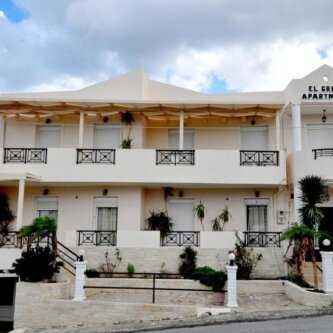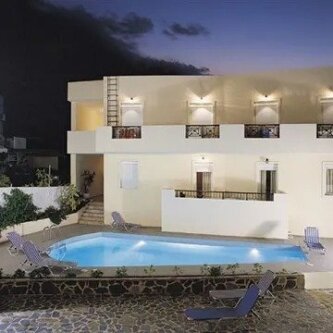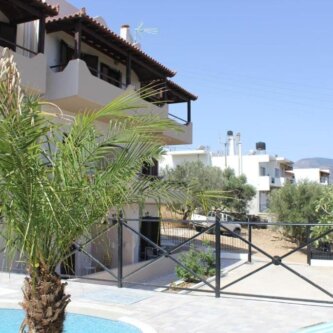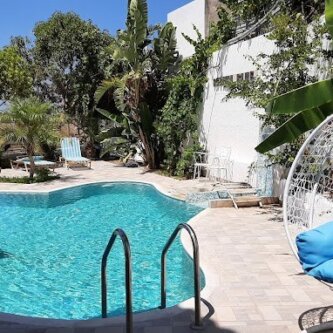Overview
When the Eastern sun East daily shines on the land, the places and the people, its rays bless the hallowed ground and bestow upon it innumerable virtues. Every waking day, this blessed place of Kalo Chorio relates and reconnects its existence with the sun and the sea, the mountain, the forests and the plain, to its people and their spirited ways.
Its natural environment, its visual impact, and its physical beauty remain unchanged as many centuries ago. The people of Kalo Chorio are bound up with nature and their land, and from Minoan times they have fought and lived with the unique conditions that the wonders of nature has bestowed upon their bountiful place. Even today we see the same great effort, the same positive outlook, the same striving of the people for the best.
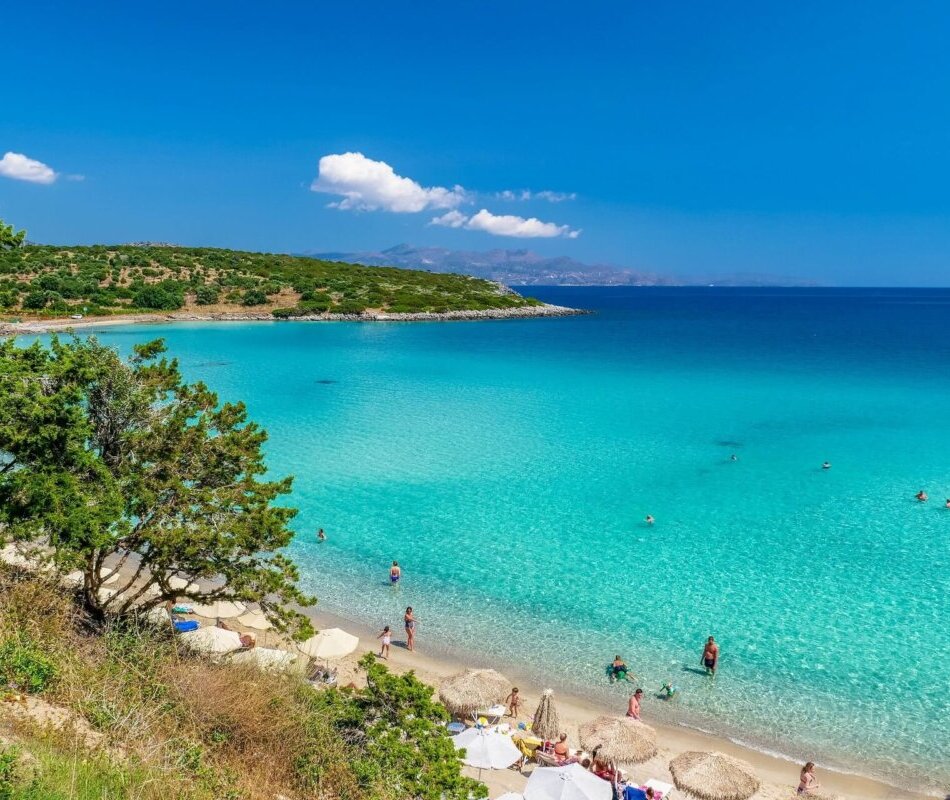
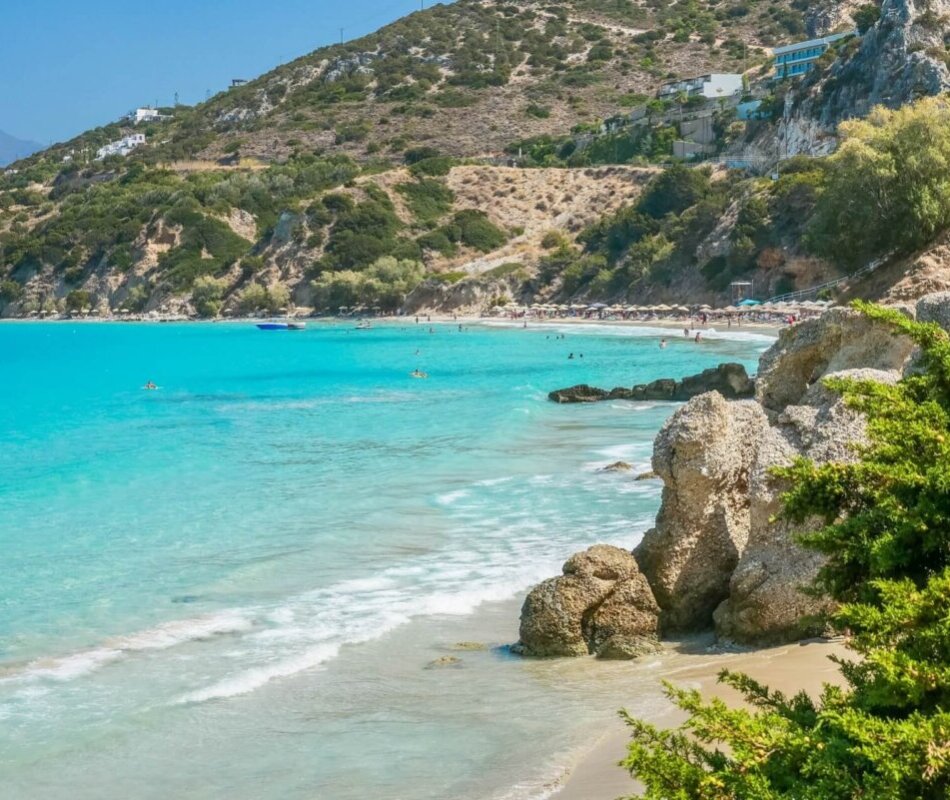
The Village
The people of Kalo Chorio are generous and hospitable, possessing a calm yet decisive soul, with a rare purpose that aspires to quietly achieve the progress of the area as well as their own, just as the quiet waves of the Mirambello seashore caress the northern end of the fertile plain of Kalo Chorio with its white foam. The uniqueness of the physical beauty of the Kalo Horio – Istron region and the friendliness of the inhabitants have given it a reputation as a summer resort and a very favorite place to buy a house for living. It has been said that the southern coastline of the Gulf of Mirabello has something of the Character of the Riviera, but with uncrowned beaches and only a few hotels.
The well-known archaeological history of the place starts with settlements from the Minoan era found over a large area. Between 1910 and 1912, the American archaeologist Edith Hall uncovered the un-named small agricultural and cattle-breeding settlements on Brokrastre Hill. Next to here there is the settlement of Istrona, which has retained its name over many centuries (from the 6th century B.C. until the 18th century A.D.).
More details have been made available from the 1834 census, when Istrona had 20 Christian and 4 Muslim families. In Roman times until the 9th century, when the Saracen Arabs reveled in their destruction of all Crete, Istron, later called Istronas, became the only main settlement in the area. A ruined ancient Greek temple is found near Pirgos, which might reveal some elements of the history of the place during its excavations. It could have been a temple dedicated to Bachuus (Dionisus), and thereafter the church of Saint Sergios, as has been reported by historians.
Kalo Chorio now has 1125 inhabitants in its four settlements. The hotels and many rental apartments in the extensive area of Istron and Forti accommodate thousands of visitors every year. During recent years, the local inhabitants, together with their agricultural activities, have been actively involved in tourism, and in the Arts and Literature, and have gained an enviable reputation in matters of culture and athletics. These include The Cretan and Popular Dance Academy, and their admirable Cretan nights, and sports activities in particular, football, where the youth of Kao Horio have been playing a leading part since 1982 in Lassithi football with their local team, A.S. Pirgos.
Local Beaches
There are three attractive bays with clean sand and pebble beaches, shaded with by tamarisk trees, and providing very safe swimming plus a variety of water sports.
The first beach on the west , 1km west of the village is the most secluded area called Karavostassis . It is a great beach with pebbles and sand , which is organized. Formed on the west side of the greater Gulf of Istria and is ideal for relaxing moments . All around there are many trees , carob and olive trees. In the same bay , east of Karabostasi there is a large rock , behind which unfolds the second beach of Agios Panteleimon . Saint Panteleimon gets its name from the picturesque church is built over the sea. The beach is sandy and well organized with umbrellas , showers, water sports , etc. In fact , it is considered as a decent spot for windsurfing.
The second bay Istrou located 500m east of the village . Here is one of the most beautiful beaches of Greece featured in many card postals Crete . Voulisma or Golden Sand is a lovely beach with white sand that gives a wonderful exotic blue color. The beach is very well organized with umbrellas , showers, water sports , etc.. Another great beach is 1km east of Istron and is well hidden on the edge of a steep gulf. The beach is named Clay , but is more commonly known by the name Istron Bay, because of the namesake hotel is built on the steep slopes of the bay. While it seems like private , there is a path leading to the beach in the west of the hotel. Besides , do not forget that there are no private beaches in Greece . The Istron Bay beach is sandy and has a calm blue waters. It is well organized with umbrellas and deck chairs from the hotel and there is a small pier for boats.
Between Clay and Voulisma there is a small peninsula with olive groves , in which dirt road lies the unknown Chartalami beach swimming, ideal for isolation. The Istron Bay beach is not the last beach of Istron as there is in the east three small beaches with beautiful water . The beaches are accessible by trail and called Vryonisi (or Prassonisi ) because of the homonymous small island located just opposite .





